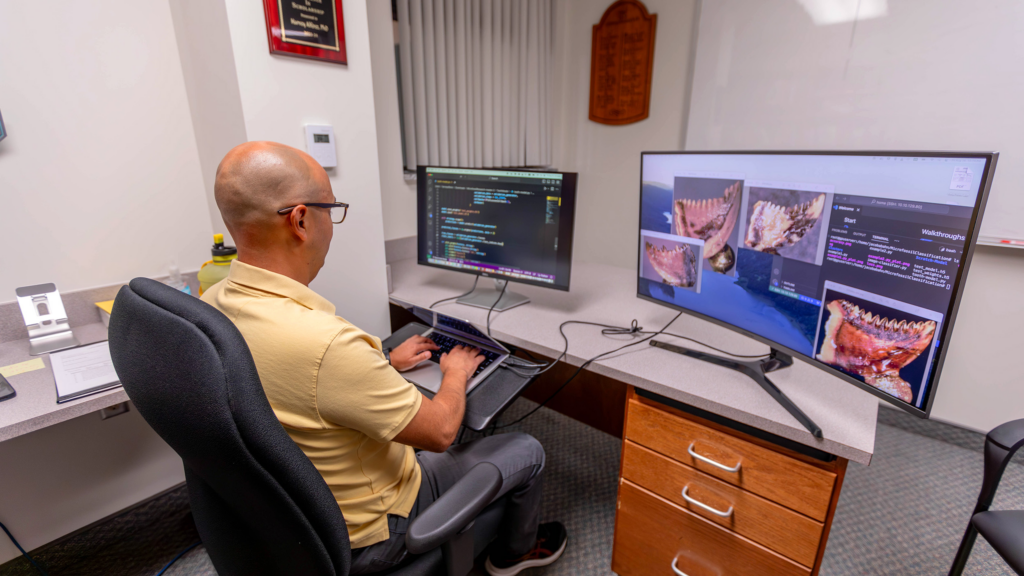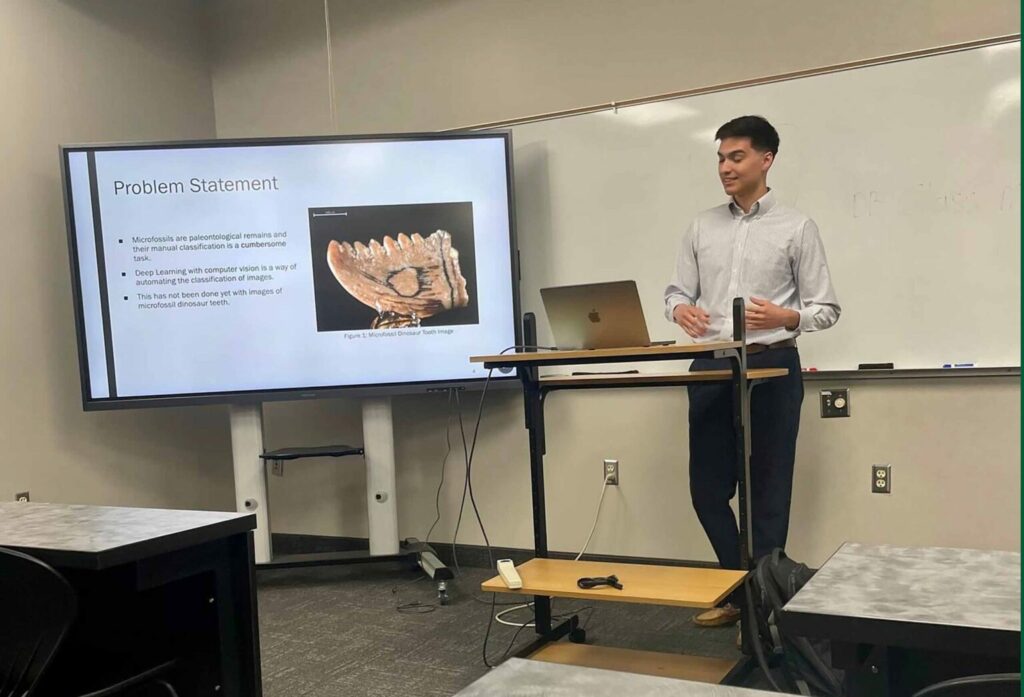Southern Adventist University Trains AI Model to Classify Dinosaur Teeth
Deep learning system is helping researchers analyze and classify findings.
December 16, 2024 | Collegedale, Tennessee, United States | Gabriella Grundy, Southern Adventist University
Paleontologists help us understand the history of life on earth through their study of fossils, which they manually identify by examining the fossils’ geometry and other features. But what if they had a faster, easier, and more effective way to classify these ancient traces of life?
Southern Adventist University’s Biology and Allied Health Department and School of Computing have collaborated on a project that uses artificial intelligence (AI) to identify dinosaur teeth. The project applies the form of AI known as deep learning, which uses artificial neural networks to learn from data and solve complex problems.
Harvey Alférez, professor and director of the Center for Innovation and Research in Computing (CIRC) in the School of Computing, and Keith Snyder, chair of the Biology and Allied Health Department, began formulating the idea for the project in fall 2022. They wanted to explore the possibility of using deep learning technology to classify images of dinosaur teeth. This meant inputting images of teeth to train the model to classify an image, then assigning the image to a group based on the type of tooth recognized by the model.

Harvey Alférez investigates the ways that deep learning technology helps to classify images of dinosaur teeth. [Photo: Mila Bales]
“I was super-intrigued by the project, even though I had never previously worked with deep learning technology,” Bahn said. Using a data set of 487 images from Snyder’s collection of microfossil Pectinodon bakkeri teeth, which were obtained during dinosaur digs in Wyoming, United States, Bahn began the work of gathering data.
Bahn first organized numerical values based on certain features of the dinosaur teeth into a file before running machine learning algorithms on it. As a result, he was able to create three different groupings of the teeth. Next, these groupings were used to train a deep learning model that would automatically classify the images. Eighty percent of Snyder’s images were used for training, and after a cleaning process, the other 20 percent were used to validate the model.
The deep learning model was trained on the new GPU server in the School of Computing, which was purchased with funds from a research grant provided by the Faith and Science Council of the General Conference of Seventh-day Adventists, as well as donations from Southern’s 2022 Giving Day.
The results of the validation are promising, with 71 percent accuracy, 71 percent precision, 70.5 percent recall, and a 70.5 percent F1-score, which indicates the reliability of how the model was used in this context. Alférez, Bahn, and Snyder are continuing to edit and modify Bahn’s original thesis with the aim of having it peer-reviewed and published in an academic journal.

Jacob Bahn shares a presentation about using artificial intelligence to streamline the dinosaur tooth classification process. [Photo: Mila Bales]
The two professors said that this is the first collaboration of its kind at Southern, a Seventh-day Adventist university in Collegedale, Tennessee, United States. “The nature of this project requires lots of data, which is something that the biology team can provide,” Alférez said. “Then, processing that data is our side, the computing side of things.”
Snyder concurred. “For a project like this, it is essential to have the expertise in both fields to reach the goal.”
According to Alférez and Snyder, this collaborative project has opened the door for the School of Computing and the Biology and Allied Health Department to develop additional endeavors, with the goal of providing more learning opportunities for students.
“We live in the era of AI,” Alférez said. “Through these projects, students are able to generate new knowledge and gain the necessary preparation for jobs in which AI is highly sought after.”
The original version of this story was posted on the Southern Adventist University news site.